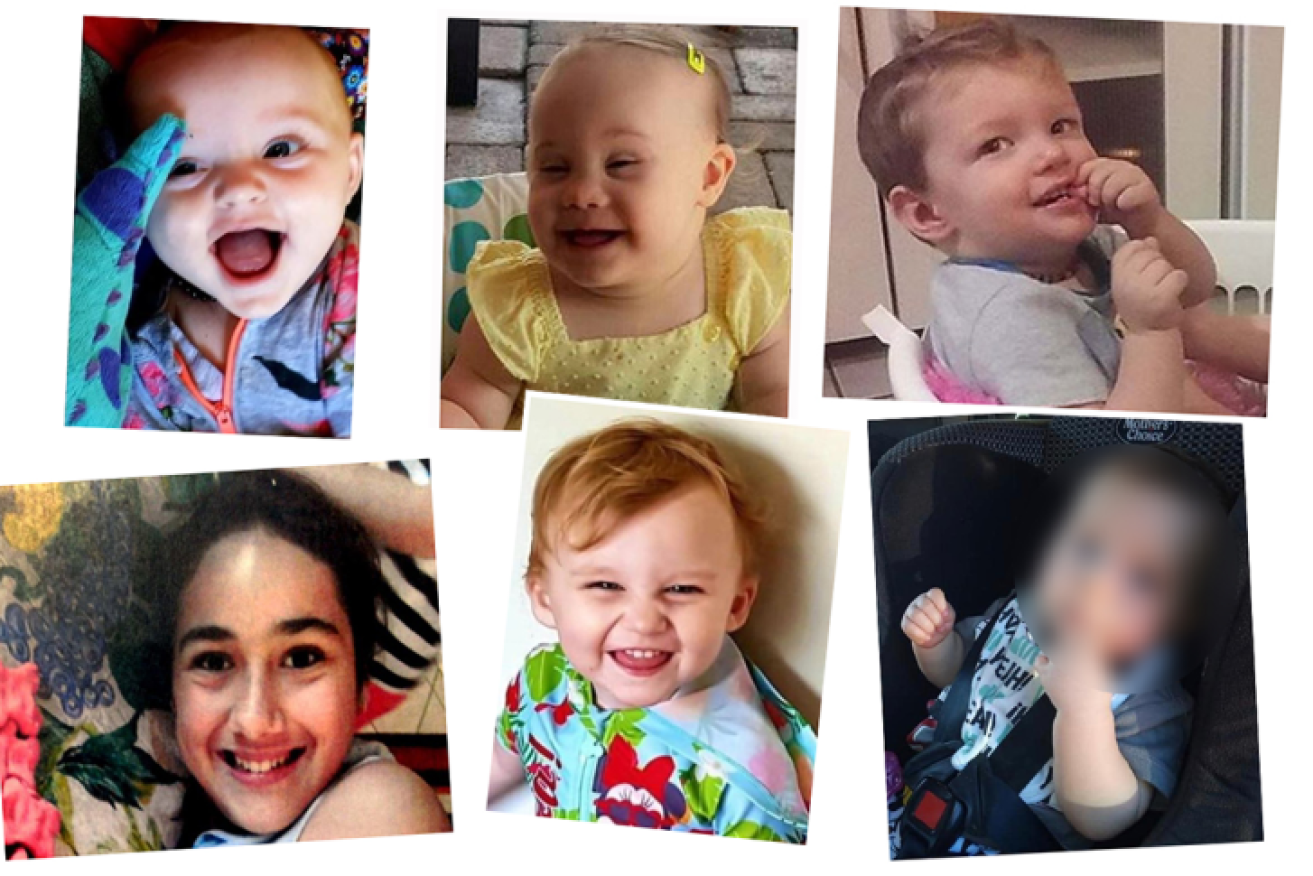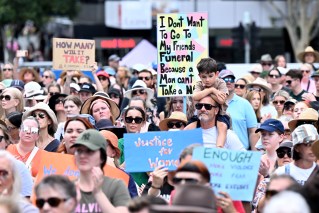Risks to vulnerable kids could get worse if staffing issues go unfixed, review board warns
Under-staffing in the child protection sector risks more harm to vulnerable children after a blow-out in child deaths last year, a panel of experts has warned.


These children were all known to Queensland's child safety department before their tragic deaths.(Supplied)
Queensland’s Child Death Review Board (CDRB) has raised the red flag following last month’s release of a report showing 69 children known to the child protection system died between July 2021 and June 2022, an increase from 53 children the year before.
CDRB chair Luke Twyford described the increase as “confronting”, following his organisation’s investigation into the deaths of 55 children during last year’s reporting period. The remaining 14 cases are still being finalised.
Of the 69 children who died, 51 per cent were Aboriginal or Torres Strait Islander, reflecting the over-representation of First Nations children in the child protection system.
Almost 70 per cent of the reviewed cases were under the age of four.
Of the 55 children investigated, 31 died due to external causes — including six children who drowned and another six who died by suicide.
One was a child between 10 and 14 years of age.
Three children died due to fatal assault or neglect. Ten children died in similar circumstances the previous year.
Four children were under permanent guardianship orders in foster or kinship care and two were in residential care, but the majority were living independently or with family and friends at the time of their death.
Since being established in July 2020, the CDRB has investigated 110 deaths of children known to child protection.
Further analysis by the CDRB released this week has identified staff shortages in the sector as a major barrier to improving the system and keeping children safe.
The sector’s stretched resources were also highlighted in last month’s report from details provided by the several agencies that comprise the child protection system.
The information in the report paints a sector under significant stress, exacerbated by high staff turnover managing intense workloads with limited experience and shortages of suitably qualified staff amid challenges attracting and retaining new recruits.
As previously reported by InQueensland, stress points are spread across the agencies most closely connected to the child protection network, such as Queensland Health, Queensland Police Service, Education Queensland and Child Safety, with challenges particularly acute in rural, regional and remote Queensland.
Twyford said a child’s accumulated harm from being regularly exposed to domestic and family violence was difficult to identify when frontline staff capacity was impacted.
“Gaps in knowledge or training can lead to responses that do not recognise complex factors that surround domestic and family violence, resulting in suboptimal responses to children and parents,” he said.
“Training is integral to supporting frontline staff to identify and respond to violence; however, despite the good intent of workers, the system faces workforce turnover and capacity challenges, which impact agencies’ ability to retain contemporary workforce knowledge and experience.”
His assessment is in addition to the CDRB’s conclusion that children exposed to domestic violence need responses that see them as victims not as witnesses to protect them from further harm.
Without that approach children are at risk of further direct physical and emotional harm coupled with long-term suffering from poor development, ill-health and behavioural and psychological challenges, he said.
Twyford said most deaths investigated were not directly related to domestic and family violence, although violence was present in a high number of cases.
“The key learning from this analysis was that children who grow up in environments of domestic and family violence need to be considered victims in their own right, not merely witnesses, and any improvements in system responses need to maintain this focus,” he said.
“The analysis found the risk of harm to children was being missed where children were not interviewed appropriately, decisions about their safety were made based on incomplete information, or risk assessments did not consider all types of harm caused by domestic and family violence.”
Twyford said that while domestic and family violence services played a key role in supporting parents and children, the analysis found uptake of these programs was low, particularly by the offending parent, with barriers including waitlists, fear that engagement would lead to further involvement from the child safety authority, and lack of follow-up for families that relocate.
“Some First Nations families experienced barriers to support when they were referred to services without discussions around culturally appropriate and trauma-informed options,” he said.
“Programs that focus on fatherhood were found to be a significant motivator to encourage fathers to accept accountability and facilitate behaviour change, although these practices are not well embedded across men’s behaviour-change programs.”












